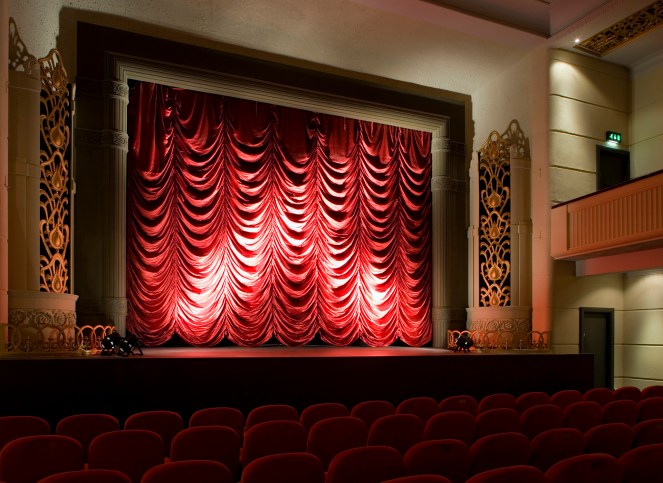
Everyman Cinemas is set to open a new arthouse cinema on Grey Street to rival Tyneside Cinema. But with declining interest in specialised films is this decision viable?
Tyneside Cinema, an arthouse cinema located in the area between Grey’s Monument and Pilgrim Street – once the ancient site of a Franciscan friary (1287) and grand mansion known as the Newe House (1580), centuries before the Dobson-Grainger partnership built the Newcastle familiar to us today – is one of the city’s most popular institutions with a tradition that stretches back to the 1930s. Although it considers itself ‘Britain’s last remaining News Theatre’, much has changed since the Newcastle News Theatre (1937) first opened in the shadow of the art deco Paramount Cinema (now demolished) that once towered across the street.
The cinema has responded to many of 20th and 21st century Britain’s cultural developments: the emergence of television, the multiplex and digital; the increased interest in film culture, European art cinema and specialist films and art. Television brought the demise of projected news, while film societies helped foster an audience for the exotic, strange and glamorous worlds of afar. In the last few years, the cinema has installed 2k and 4k projectors, moving 99% of its programme over to digital projection. There are still facilities available for the exhibition of 35mm film prints but the sight of celluloid crackling on the silver screen is no longer commonplace.
In 2008, this once dilapidated and uninviting two-screen cinema, was converted into a three-screen modern picture palace complete with luxury seats and bar areas. The original mosaic floors and art-deco Classic screen were restored to their original glory, an act which would surely please founding father Dixon Scott, whose role in the history of the cinema has been often highlighted since redevelopment.
In line with contemporary trends in cinema-going (more on this later), the Tyneside has set to enhance the cinematic experience by emphasising areas outside the darkness of the Classic, Roxy and Electra screens. Museum spaces tell its history, a fourth screen plays art in the day and films in the evening and the Digital Lounge hosts parties and events. On the ground floor, the Bar Café, a restaurant that offers upscale cuisine, and Vicolo, the latest development, the street-level coffee bar that replaced Intermezzo, attract customers who may not know the difference between grissini and Rossellini but can subsidise the cinema’s activities through their food and drink purchases.
Although the cinema has figured as the centre of Geordie cinephilia since the Tyneside Film Society began renting its spaces in the 1940s, it has not been without rivalry. The Side and the Star and Shadow cinemas had attempted in the years following redevelopment to capitalise on Tyneside Cinema’s decision to move towards more mainstream programming. With a programme that now included Harry Potter, superhero films and Fifty Shades of Grey, the cinema found itself criticised by many who had supported it throughout its history of financial difficulties. Following hardship faced by both the Side (government cuts) and Star and Shadow (land sold to build student flats) – sites which were from the outset unable to challenge the Tyneside’s dominance due to location, funding and structure – cinephilic interest has returned securely to Tyneside Cinema. That is until now.
Riding the wave of major financial success, Everyman Cinemas, an originally London-centric chain of boutique cinemas, has decided to expand into the North of England. The company already owns a cinema in Leeds and one in Harrogate, and plans on opening new sites in York, Liverpool and Durham in the near future. Everyman Media Ltd. recently submitted an application to Newcastle City Council requesting to develop a subterranean two-screen cinema on Grey Street, opposite the Theatre Royal. But is there room for another arthouse cinema in Newcastle?
***
Between 2001 and 2015, specialised films – defined by the BFI as feature documentaries, subtitled foreign language films, re-releases of archive/classic films and other films with a distinctive hook, genre or style – attracted on average 8.72% of UK cinema audiences. Some years were better than others: 2009, with the success of Slumdog Millionaire, saw market share rise to 15.2%, while the The Kings Speech helped to boost that number up to 16.4% in 2011.
The figures for 2015 were, however, dismal. Although specialised films constituted 60.1% of film releases, they attracted only 3.7% of cinema audiences (and subtitled foreign language features were watched by merely 2.2% of cinema audiences). The BFI explained this by highlighting the strength of a few record-breaking box office wonders – Star Wars: The Force Awakens, SPECTRE, Jurassic World, Avengers: Age of Ultron – which purportedly distracted audiences from less mainstream offerings.
Some film critics across the UK were shaken. Several factors were cited: the growth and increasing popularity of streaming services such as Netflix, MUBI, Curzon Home Cinema and BFI Player (that old chestnut), the mainstreaming of traditional arthouse programming (as we have seen with Tyneside Cinema) and the sheer number of foreign language films currently available for exhibition.
We shouldn’t, however, draw too many lessons from the case of 2015. There are several issues at stake which may be resolved in future years. There may have been problems with the types of specialised and foreign language films offered that year (unappetising content) or with the BFI’s own methodology (it is unclear what ‘other films with a distinctive hook, genre or style’ refers to exactly). Slumdog Millionaire, The King’s Speech and Life of Pi were three films that were filed under specialised despite playing to major success in mainstream cinemas. Whether they deserve to be included in this category is a good question. I for one would like greater access to the data (including 2016- onwards) before we start pronouncing the death of the specialised film.
Nevertheless, if such trends continue, as they may well do, this would prove very disappointing for film fans across the country. Such a development seemingly clashes, however, with the success of arthouse cinema chains Picture House (Cineworld) and Everyman Cinemas. If interest in specialised films is on the wane, what explains their success, and indeed, Everyman Cinema’s ability to expand into the North of England?
***
Despite the numerous protestations that streaming services and illegal downloads are causing (or will cause) cinemas to lose customers, the BFI’s data show that UK cinema attendances have remained more or less unchanged since 2002. In fact, we can see that they have steadily risen from an all-time low of 54 million in 1984 to the 160-175 million bracket they sit at today. Every year of course brings a new fluctuation within these set of figures but audiences do appear relatively stable. Cinemas will unlikely ever reach the heights of the 1940s and 1950s again (when audience figures often topped 1,500 million) but significant interest does remain with the local cinema.
As suggested above, there have been many significant changes in the cinematic experience in recent years. Recalling the technological innovations of Cinerama, Cinemascope and early 3D in the 1950s, which attempted to claw back audiences lost to television, production companies, distributors and cinemas have searched for new ways to enhance cinema-going in the digital age. We have seen the rise and fall of RealD 3D and the frequent installation of 4k projectors and Dolby Atmos surround sound technology. More importantly, however, can we point to other innovations issued by the exhibitors themselves.
At Tyneside Cinema, this is evident in the move towards film as merely one part of a bigger package which may include food, drink (usually alcohol), quizzes, games and other fun activities. One can eat in the Bar Café at lunch time, catch a film mid-afternoon and follow it up with a cocktail in Vicolo afterwards. Films may be followed by filmmaker and critic Q&As or audience discussions led by Tyneside staff. In some cases, audience members may be invited to dress up as their favourite characters and act out key moments in the aisles. Or perhaps we may find ourselves attracted more to the comfy seats than the film itself. Seeing a film is now more than just watching and appreciating a film in a dark room, it is an event. It is a luxury experience that we are happy to pay more for.
Everyman takes this last point much further than Tyneside Cinema. If we compare the ticket prices of say Baby Driver (Edgar Wright) at Tyneside Cinema and Everyman Leeds (I have chosen Leeds as it is a northern city and should be more likely to resemble Everyman’s future Newcastle pricing and programming than their London screens) on the evening of Saturday 15th July we can see a substantial divergence. At the Tyneside Cinema, an adult ticket costs £9.75, at Everyman Leeds, the same ticket costs £13.50. The former is relatively affordable, the latter is pushing it. Access to luxury seating areas, alcohol and gourmet snacks (which are themselves by no means cheap) are the draws. No longer must we suffer stale popcorn, dirty seats and rowdy cinema screens. And a major plus is that we can now see the same films that are also playing at the Odeon, Empire or Cineworld with improved comfort and pleasure.
Take a look at Everyman Leeds’ current programme for Sunday 16th July: Despicable Me 3, Spider-Man Homecoming, War for the Planet of the Apes, Cars 3, Baby Driver, The Beguiled. It is up for debate whether this cinema has the right to call itself an arthouse. Tyneside Cinema, on the other hand, fares much better: A Change in the Weather, Alone in Berlin, David Lynch: The Art Life, It Comes at Night, The Death of Louis XIV, Jaws, Jurassic Park, Baby Driver, The Beguiled. This is the reason why Everyman and Tyneside Cinema will be able to coexist. One offers mainstream films (and a few arthouse titles) in a luxurious but expensive setting, the other shows films from around the world (as well as some mainstream titles) with similar levels of comfort. We can only hope that Tyneside Cinema continues to show us the world in the years to come.


Interesting thooughts
LikeLike